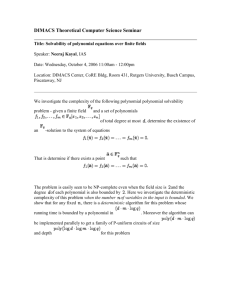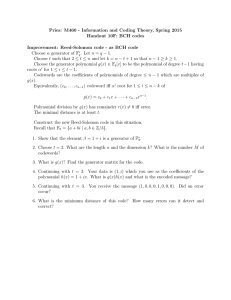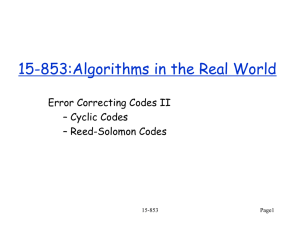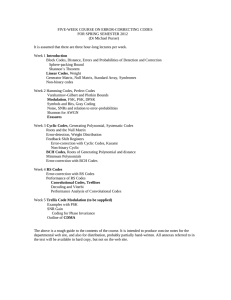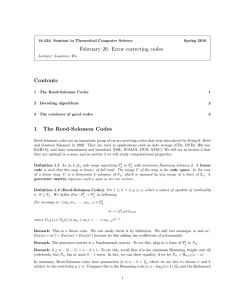Information theory and error control coding/Teoria da informação e
advertisement
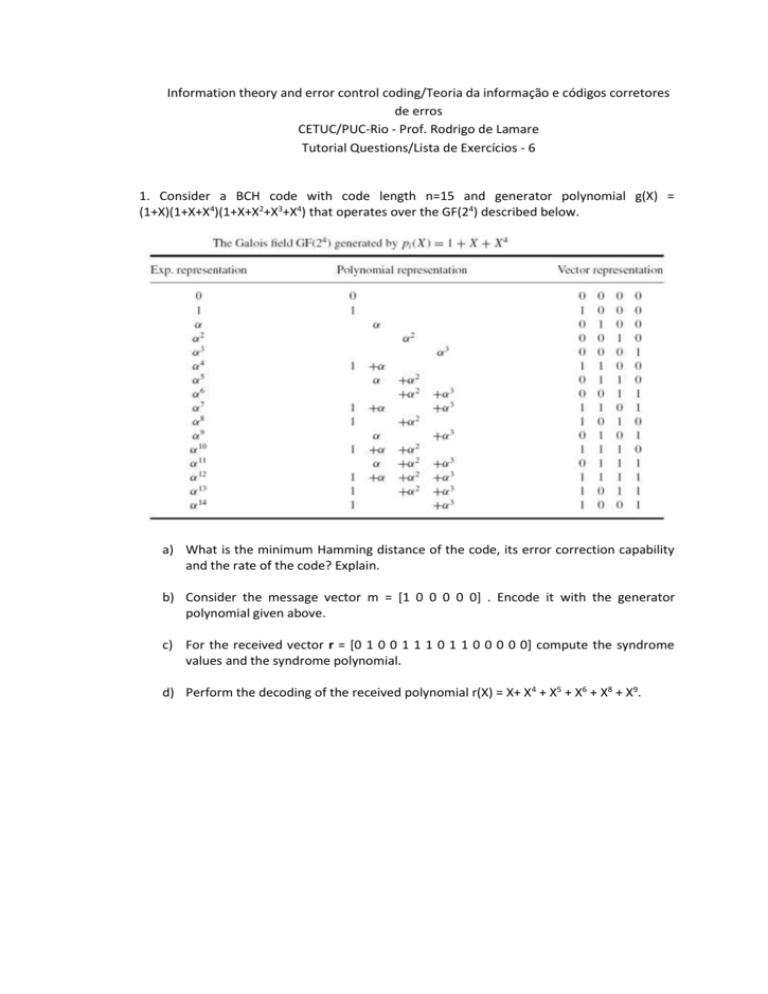
Information theory and error control coding/Teoria da informação e códigos corretores de erros CETUC/PUC-Rio - Prof. Rodrigo de Lamare Tutorial Questions/Lista de Exercícios - 6 1. Consider a BCH code with code length n=15 and generator polynomial g(X) = (1+X)(1+X+X4)(1+X+X2+X3+X4) that operates over the GF(24) described below. a) What is the minimum Hamming distance of the code, its error correction capability and the rate of the code? Explain. b) Consider the message vector m = [1 0 0 0 0 0] . Encode it with the generator polynomial given above. c) For the received vector r = [0 1 0 0 1 1 1 0 1 1 0 0 0 0 0] compute the syndrome values and the syndrome polynomial. d) Perform the decoding of the received polynomial r(X) = X+ X4 + X5 + X6 + X8 + X9. 2. Consider a Reed-Solomon code with code length n=7 and message length k = 3 that operates over the GF(23) described below. a) Consider the received vector r = (000 000 100 000 100 000 000) and write down the received polynomial r(x) and the syndrome b) Compute the error location polynomial σ(x) with the Berlekamp-Massey algorithm. c) Determine the error positions and the error values. 3. Develop a Matlab code to simulate BCH and Reed-Solomon codes with arbitrary parameters (n,k) using BPSK modulation and additive white Gaussian noise. Suggestion: use Matlab´s communication toolbox. a) Plot the bit error ratio (BER) against the signal-to-noise ratio (SNR) for a range of values. Suggestion: pick 5 or 6 SNR points, use 2 different (n,k) for each coding scheme. b) Compare the BER x SNR performance of different codes with that of uncoded systems.





